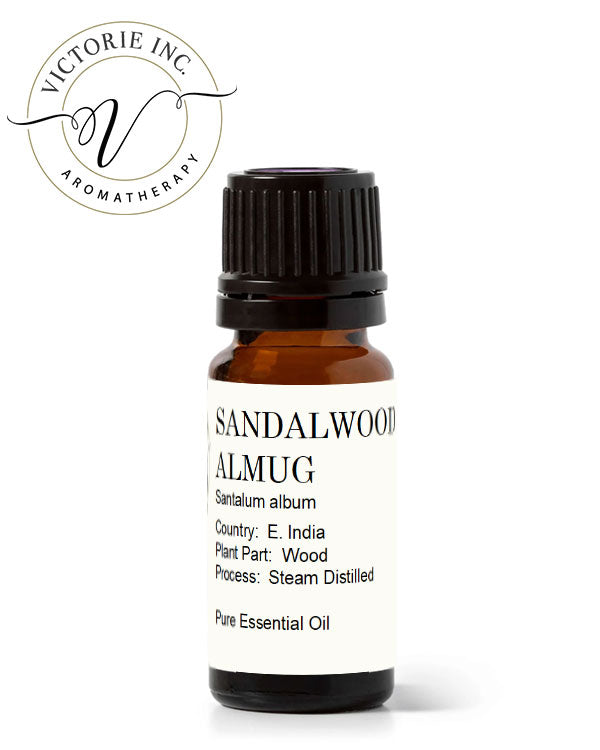
Sandalwood Essential Oil
Sandalwood Essential Oil
Scientific Name: Santalum album
Country of Origin: E. India
Distillation Method: Steam Distilled
Plant Part: Wood
Perfume Note: Base
Sandalwood is also known as one of the oldest known perfume materials with 4,000 documented use. It has a rich, soft woody aroma.
Sandalwood is an evergreen, parasitic tree that burrows its roots into other trees. It can grow up to 30 feet high and has a brown-gray trunk, many smooth slender branches, leathery leaves and small pink-purple flowers.
We believe the Sandalwood is named Almug Tree in the Bible. The almug tree was used to build Solomon's Temple, house, and construction of musical instruments. This oil is one of the oldest known perfume materials with 4,000 years of documented use. It was/is used as a traditional incense and embalming material throughout the East. References state it is probable that this tree is sandalwood, native to India and Ceylon.
Blending Suggestions: Amyris, Ambrette Seed, Bergamot, Black Pepper, Clove, Geranium, Jasmine, Lavender, Myrrh, Orange, Patchouli, Plai, Rose, Neroli, Vetiver, Ylang Ylang.
Suggested Uses & Properties for External Applications:
Anointing Oil, Perfume, Mediation, Massage Oils, Balms, Incense
Relaxation, Stress Relief, Uplifting, Calming, Comforting
Analgesic, Antispasmodic, Antianxiety, Antifungal, Anti-inflammatory, Antiviral, Sedative
Safety:
Hazards: A rare but known cause of adverse skin reactions.
Contraindications: None known.
Maximum dermal use level: 2%
Tisserand, Robert; Young, Rodney. Essential Oil Safety: A Guide for Health Care Professionals (p. 1662). Elsevier Health Sciences. Kindle Edition.
Storage: Store in a dark colored bottle out of direct sunlight.
Scripture References
1Kings 10:11, 1Kings 10:12
This information has not been evaluated by the Food and Drug Administration. This product is not intended to diagnose, treat, cure, or prevent any disease. For educational purposes only.


